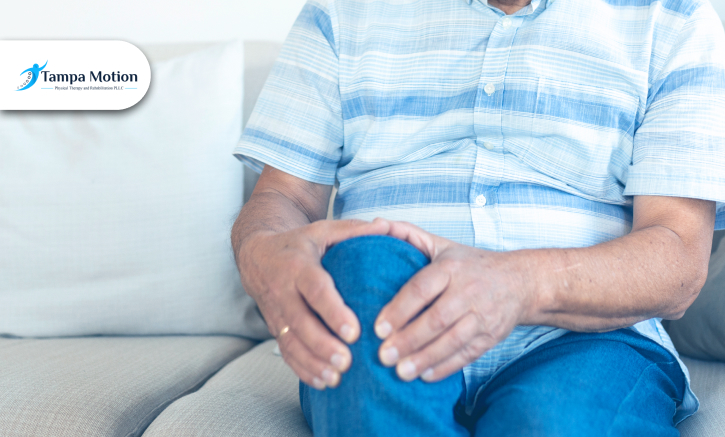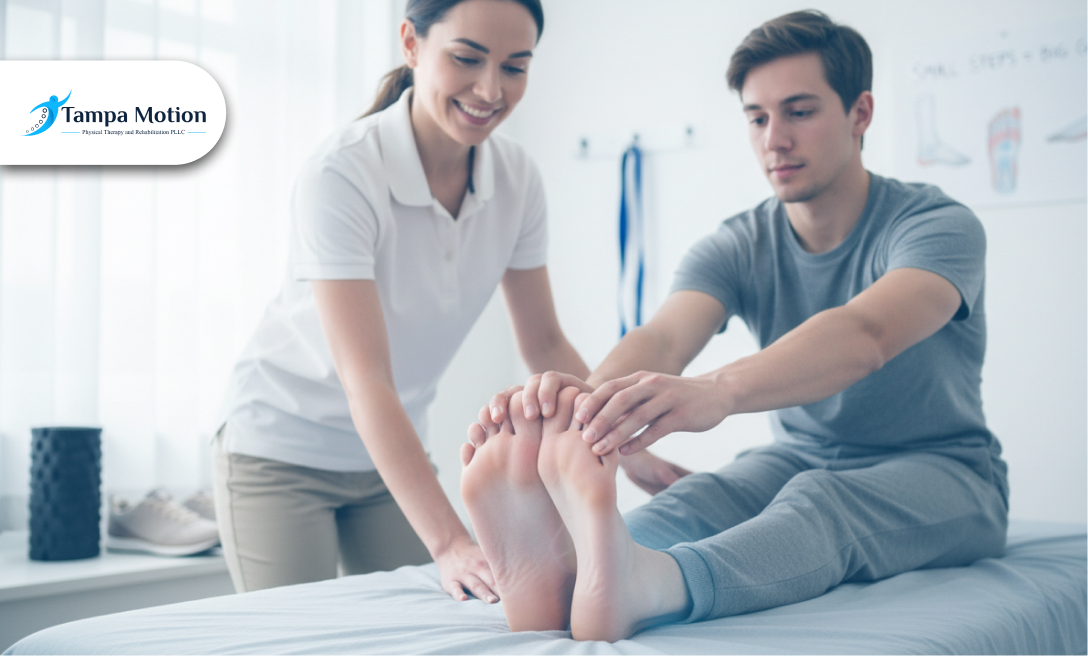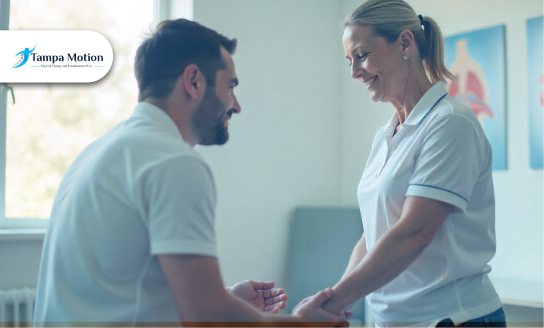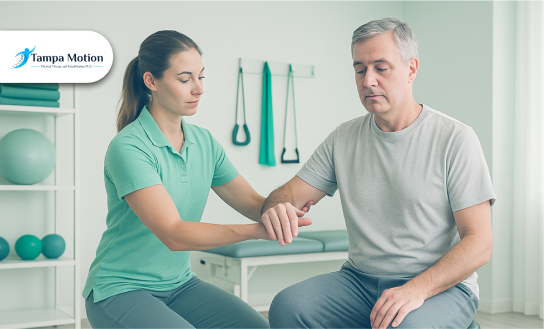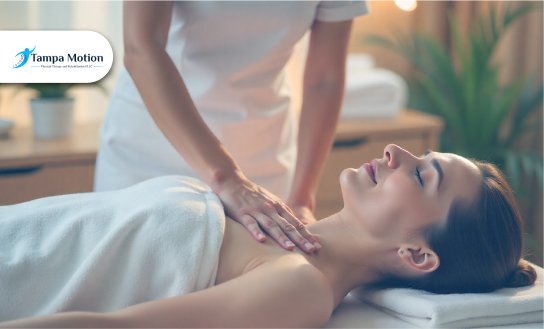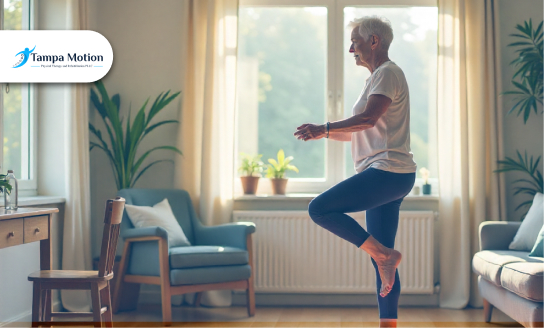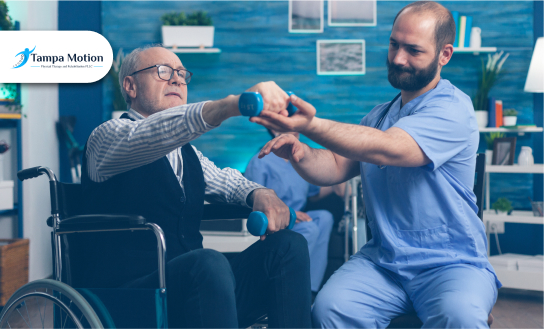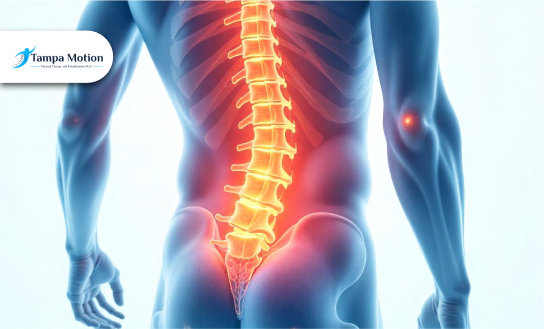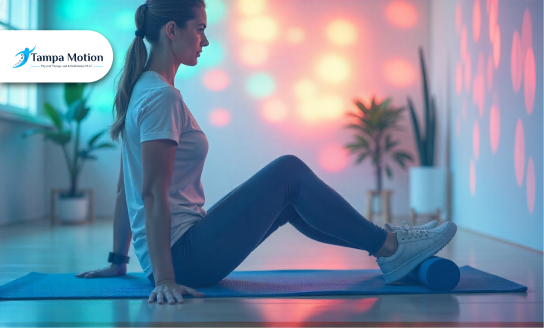
Coping with Urinary Incontinence? PT Methods That Work
September 25, 2025
Coping with Urinary Incontinence? PT Methods That Work

The humidity clings to your skin as you jog along Tampa’s Bayshore Boulevard. Pelicans dive for fish, paddleboarders drift past, and the sun hits that golden angle over the water. Then it happens, a sudden loss of control. It is not the kind of story you bring up over dinner, yet millions of Floridians live it every day.
Urinary incontinence is more than a medical condition, it is a daily disruption that can shrink your social life and limit the activities you love. While ads push medications and surgeries, a quieter revolution is happening in physical therapy clinics across Florida. This approach blends science, technology, and personalized training to retrain your body’s control system.
Tampa Motion is right in the middle of it, and the way they get results might not be what you expect.
I) The Quiet Epidemic Nobody Talks About
Across the United States, urinary incontinence affects more than 25 million adults. In Florida, the number skews higher due to a large population of older residents and an active lifestyle that keeps people moving well into their later years. Warm weather draws people outdoors year-round, from morning beach runs in Clearwater to long afternoons paddleboarding on the Gulf.
For anyone living with bladder control issues, these moments are shadowed by constant calculation, where the nearest restroom is and how far they can push themselves without an accident.
The stigma runs deep. Many people delay speaking to a professional for years, assuming it is a normal part of aging or something they must manage alone. That silence comes at a cost, reducing social engagement and cutting into physical activity, two things that are central to life in Florida.
This is where a different kind of care steps in, one that approaches bladder control as a skill that can be rebuilt rather than a problem to hide.
II) Why Physical Therapy Wins Over Pills
Medications can mask symptoms for a while, and surgery can alter anatomy, yet neither addresses the underlying muscle and nerve coordination that keeps the bladder working smoothly. Physical therapy takes a different route, focusing on restoring the body’s natural control system. The science is simple and precise, training the pelvic floor and core muscles to respond automatically, just as they once did.
Across Florida, more people are trading in prescription refills for therapy sessions. They are finding that a few months of targeted exercises, guided by a specialist, can produce long-term change without the side effects of medication. A Clearwater retiree who had stopped golfing now plays weekly without fear. A young Tampa mother who once avoided long car rides now makes the drive to Miami with confidence.
These results are not the product of guesswork. They come from a methodical process that blends muscle re-education with technology, a combination that forms the foundation for the next stage of recovery.
III) Pelvic Floor Training, Florida-Style
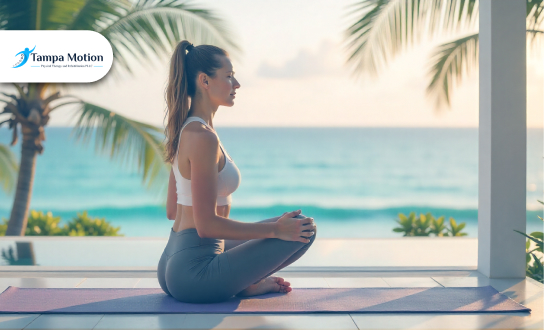
Think of the pelvic floor as your body’s command center for bladder control, a network of muscles and connective tissue acting like a security gate. When that system weakens or loses coordination, the gate slips, and control becomes unreliable. Physical therapy switches the system back online, retraining it to respond with speed and precision.
At Tampa Motion, this process is both science-driven and deeply practical:
Targeted activation drills that teach the muscles to contract and relax on command.
Core integration works combining posture, breathing, and movement so the pelvic floor reacts instinctively during daily activity.
Progressive challenge routines that shift from static exercises to functional, real-world movements like bending, lifting, and running.
To accelerate results, therapists use biofeedback technology that turns invisible muscle activity into visible data. Patients see their muscle engagement, strength levels, and endurance displayed in real time. That instant feedback sharpens awareness and speeds muscle memory formation.
For background on this approach, the National Institutes of Health offers in-depth research on biofeedback for incontinence.
It is the intersection of biology, movement, and technology, and it sets the stage for even more advanced tools in modern physical therapy.
V) Lifestyle Tweaks That Florida Life Demands
In Florida, the outdoors is not a season, it is a year-round state of mind. Mornings start with paddleboards slicing through glassy water, afternoons stretch across sun-bleached fairways, and weekends revolve around sails, surf, and open skies.
Yet, that same open-air lifestyle presents challenges for anyone managing urinary incontinence. Heat accelerates fluid loss, humidity magnifies fatigue, and activity schedules rarely sync with the body’s ideal rhythm.
Tampa Motion’s approach adapts therapy to fit these realities, ensuring that progress is protected while patients continue to enjoy the activities they love.
Major strategies include
Smart hydration timing: Front-load fluids before high-activity windows and taper intake before events where restroom access is limited.
Sport-specific adjustments: Golfers learn to structure play for comfort and control, while runners plan pacing and routes with restroom options included.
Beach and boat modifications: For long stretches on the water, therapy accounts for balance, posture, and core engagement to reduce pelvic floor strain.
Climate-aware recovery: Post-activity cooldowns and electrolyte routines counteract Florida’s heat without slowing progress.
These strategies are tested in real-world Florida conditions so whether patients are steering a sailboat into open water or jogging the bayside trail, the plan becomes second nature. The result is more than symptom management, it is the return of freedom and spontaneity.
The next step focuses on the mental dimension, where confidence and control meet to make these physical gains permanent.
VI) Mind Over Matter for Bladder Control
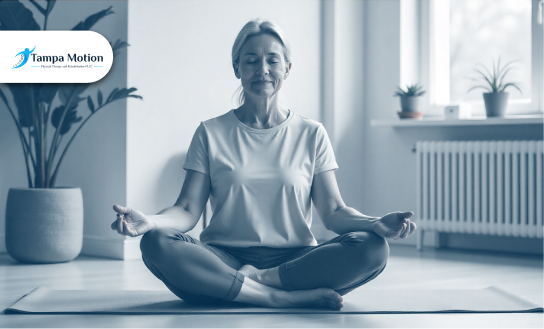
Muscle training is only half the equation. The brain controls bladder function through a constant stream of signals, and those signals are heavily influenced by stress, habit, and emotion. Tampa Motion incorporates mental conditioning to help patients reset that control system.
Stress incontinence often appears during high-impact or high-pressure moments, which are common in Florida’s active sports culture. Tennis serves, beach volleyball spikes, even a sudden burst of laughter during a paddleboarding trip can trigger leakage if the mind and body are not working in sync.
Therapists use techniques that calm the nervous system and improve coordination:
Breathing drills that anchor the pelvic floor during sudden movement.
Mindfulness apps that guide daily practice in body awareness and relaxation.
Visualization exercises that retrain the brain to anticipate and control bladder responses before stress hits.
These tools help replace anxiety with confidence, allowing physical gains to translate into everyday life. The next phase is turning that confidence into a personalized roadmap for long-term success.
For more on the mental connection to bladder control, the National Association for Continence provides valuable resources.
VII) Your Tampa Motion Roadmap
Your first appointment is less about treatment and more about reconnaissance. Tampa Motion treats it like a high-resolution scan of your body’s performance system. Sensors and trained hands pick up details you cannot see, from micro-delays in muscle response to posture shifts that hint at deeper imbalances. The aim is to chart not just what is wrong, but how your body moves, reacts, and compensates in real time.
From there, therapy becomes a living blueprint. Instead of a rigid set of exercises, the program reshapes itself with you. Strength gains trigger new challenges, coordination wins open the door to more complex movements. A grandmother training to lift her grandchild moves along a different track than a triathlete prepping for an open-water swim, yet both end up reclaiming the confidence to move without fear.
Milestones are marked in 2 ways, numbers that quantify muscle endurance and coordination, and moments that change your life, like playing 18 holes without scanning for the nearest restroom. You leave each session knowing what has improved and exactly where the next breakthrough lies.
By the time most people finish their roadmap, they are not just stronger, they have rewired how their body responds under pressure. Early intervention locks in those gains before habits and weakness take root, turning short-term progress into a long-term upgrade to how you live and move.
The Bottom Line for Floridians
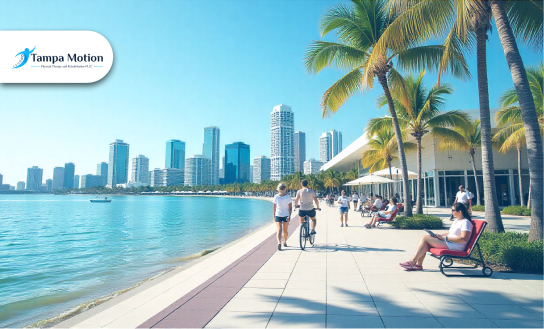
Waiting only lets symptoms take hold. Early intervention through physical therapy offers the fastest route to reclaiming control, often preventing the need for invasive procedures. In Florida’s active and vibrant communities, that difference means more days spent doing what you love without hesitation or fear.
Physical therapy is both a treatment and a proactive choice that can reshape your future. Tampa Motion stands ready to guide you through every step, customizing care that fits your unique needs and lifestyle.
You do not have to live with incontinence. Reach out to Tampa Motion today and take the first step toward freedom.
Recent Blogs
